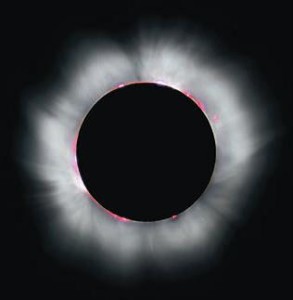by Amanda Howarth, ASCO Intern
On August 21st, 2017, individuals across the United States will wait in anticipation for an incredible and rare astronomical event – a total solar eclipse. In a total solar eclipse, the Moon moves between the sun and the Earth and completely covers the sun. The sky will become dark and will reveal the sun’s faint outer atmosphere, called its corona. The United States will experience a partial eclipse that may last two to three hours, but only a narrow region spanning 14 states will experience the total phase of the eclipse, lasting a maximum time of 2 minutes and 40 seconds.
Viewing the total phase of the eclipse, when the sun is completely covered by the Moon, is safe; however, viewing periods before and after the total eclipse phase, where individuals have the opportunity to stare directly at the sun, poses potential for visual damage. It is important to know ways to protect one’s vision.
The visible and invisible rays from the sun can damage one’s eyesight. When viewing an eclipse, retinal burns or “eclipse blindness” may occur. Exposing one’s eyes to such intense light can harm and sometimes destroy the eye’s rod and cone cells. After just a few seconds of looking at the sun, short-term retinal bleaching and discomfort can occur. After a few minutes, potential permanent blindness can occur. Staring at the sun for a long time without eye protection or while using any form of optical magnification can cause thermal injuries that accompany retinal damage. Viewers may damage their unprotected eyes without realizing it because photic retinal injuries do not cause any immediate pain.
The best and safest way to watch the uneclipsed or partially eclipsed sun is to wear special-purpose solar filters that are made to protect one’s eyes. Filters made of aluminized polyester or black polymer are inexpensive choices. One can wear “eclipse glasses” with these filters or use a hand-held filtered solar viewer.
If using a telescope, binoculars, or a camera, use a special solar filter that should be mounted on the objective lens. Do not look through any of these magnification devices without a filter, even if wearing eclipse glasses. Wearing sunglasses is unsafe.
While one should make sure to use eye protection while viewing the uneclipsed or partially eclipsed sun, the total phase of the solar eclipse can be viewed by the naked eye. Almost 40 years after the last eclipse in the United States, this sight is a must see.


